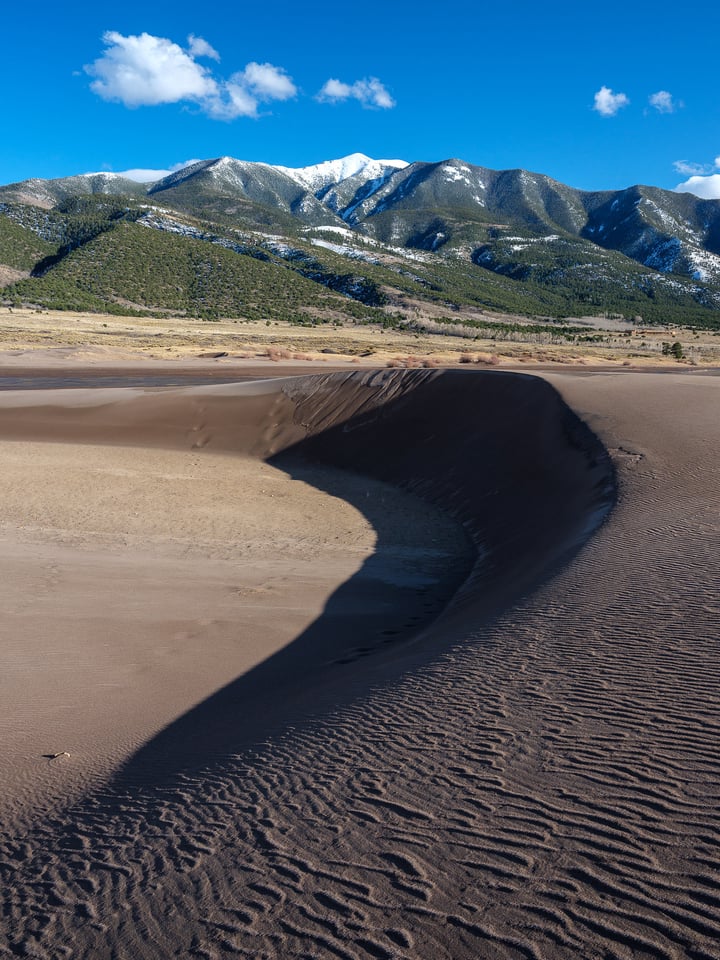Fuji GFX 50S Review: Stability
In my review of the Hasselblad X1D-50c, I complained quite a bit about the stability of the camera and its rather serious firmware and menu-related bugs that occasionally would get in the way of taking pictures. While the GFX 50S had some stability concerns and bugs initially, particularly related to autofocus behavior (as explained in the previous page of the review), Fuji engineers have been able to pinpoint the problems and address them via firmware updates.
As of today, I can confidently say that most of the serious bugs of the GFX 50S have been addressed and the stability of the camera has reached the maximum level for serious fieldwork. Still, even without any updates initially, the GFX 50S was already far better in its stability compared to the X1D-50c.
So far I have captured over 5,000 images with the GFX 50S and I have only experienced an error once, with the camera asking me to turn it off and turn it back on – that’s when I had the front element of the GF 63mm f/2.8 pushed against an object and the lens could not properly focus (the front element of this lens moves during focusing). It was clearly my fault, which brings down the number of serious crashes to zero. In comparison, I have experienced a number of serious crashes with the X1D-50c, often requiring me to remove and reattach the battery.

So far I have found only one potential problem with the GFX 50S. If the camera is left out without a battery for a few days, all camera settings get lost. I have been able to reproduce this behavior on both GFX 50S samples I have used, so it is probably a fairly common issue. For now, my recommendation is to keep the camera battery charged and inserted in the camera to prevent loss of camera settings. Ideally, Fuji should fix this problem on the GFX 50S via a firmware update – hopefully it is not a hardware issue.
Start-Up Time, Blackouts and Lags
Three other areas where the Fuji GFX 50S seriously comes out on top of the Hasselblad X1D-50c are start-up time, blackouts and lags. With the X1D-50c, one has to wait for 7-10 seconds before being able to take pictures, whereas the start-up time on the GFX 50S is much better – it typically takes less than a second for the camera to fully turn on.
The GFX 50S obviously cannot compete with a DSLR in start-up time, but it is still pretty decent for a mirrorless camera. Even when compared to my Fuji XT-1, when I turn both cameras on at the same time, the LCD screen on the GFX 50S always seems to come up first. However, the EVF is where there is a slightly longer delay on the GFX 50S when compared to the XT-1. When the EVF starts up, it sometimes comes up very bright and then gradually adjusts its brightness to the correct level – probably another addressable bug.

When it comes to blackouts, the GFX 50S certainly exhibits some blackout after taking a picture. While it is not as noticeable in continuous release mode, where the image freezes temporarily, it is definitely noticeable when taking single shots – the camera becomes inoperable for about half a second. Considering the slow readout speed of the medium format camera sensor, these blackouts are quite normal. Still, the GFX 50S is far better in blackout performance when compared to the X1D-50c – the latter can freeze for 2-3 seconds after each shot when shooting RAW + JPEG, something the GFX 50S does not do.
Lastly, the X1D-50c is far more laggy when compared to the GFX 50S as well. Whether you are navigating the camera menu, playing back images, zooming in or performing any other camera operation, the GFX 50S does it all with no noticeable lag, whereas the X1D-50c struggles as if it does not have enough processing power. It is clear that Fuji used a much more powerful processor (CPU) on the GFX 50S – in fact, Fuji stated that the CPU is easily capable of pushing 4K video! If it was not for the slow readout speed of the medium format sensor, the camera could easily handle 4K bandwidth. Again, the GFX 50S easily wins here.

Battery Life
When I looked at the specifications of the X1D-50c’s battery and compared it to the one on the GFX 50S, I figured the former would easily outperform the latter in battery life. However, I was completely wrong – even with a 1230 mAh battery that gives a total of 13K mWh compared to 23K mWh on the X1D-50c, Fuji not only outperforms the X1D-50c, but really puts it to shame. With the X1D-50c, the most I would be able to get out of a single battery is perhaps several hundred shots, whereas with the GFX 50S I could go over 1000 shots off a single charge.
That’s a pretty significant difference, something many photographers will need to seriously consider when evaluating both systems. The battery life alone on the X1D-50c is a deal-breaker for me, because it is not something I could easily tolerate in the field. I had a number of cases when the battery would dry up too quickly when I was traveling in Turkey, making it a constant struggle and hassle. In comparison, when I toured Israel with the GFX 50S for two weeks, I did not experience such battery life issues. In fact, the second backup battery I had with me was practically never used…

Fuji states that the GFX 50S can yield up to 400 shots on a single charge, but that number is based on CIPA calculations which take into account EVF and LCD use. If you turn off image playback and minimize EVF + LCD use, you can get far more than 400 images!
Table of Contents